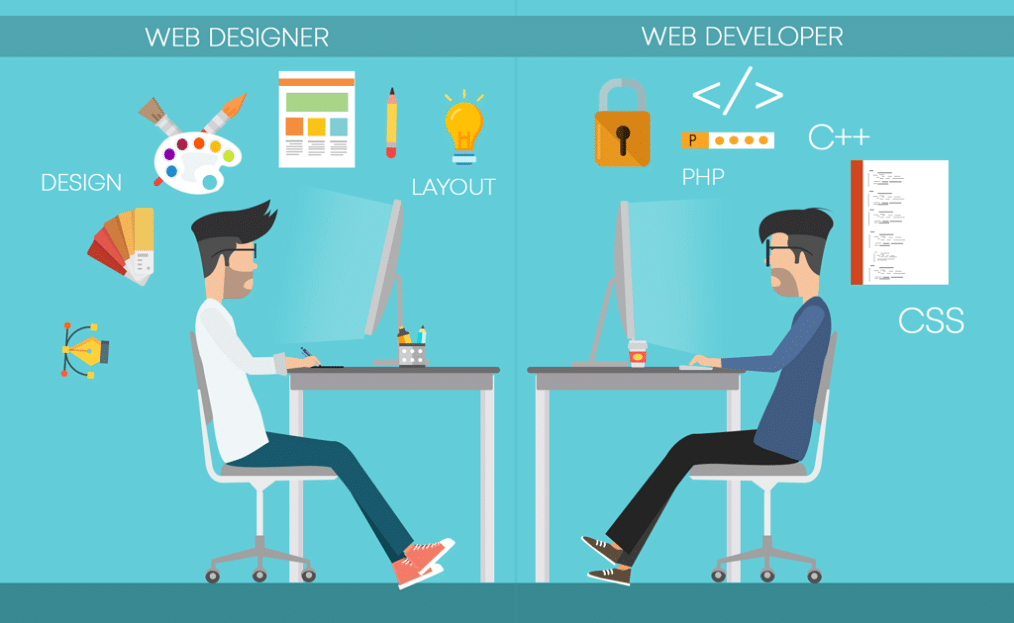Understanding the Differences between Web Design and Web Development
Web design and web development are two distinct but interrelated disciplines in the world of website creation. While they share similarities, they have key differences that are important to understand. In this blog post, we will explore the distinctions between web design and web development in more detail, without any emphasis on WordPress.
Web Design: Aesthetics, User Experience (UX), and Branding
Web design is primarily concerned with the visual aspects of a website, including its aesthetics, user experience (UX), and branding. Web designers are responsible for creating visually appealing layouts that are visually pleasing and aligned with the brand or purpose of the website. They carefully select fonts, colors, images, and other design elements to create an overall look and feel that represents the website’s message or identity.
In addition to aesthetics, web designers also focus on UX design. They create intuitive and seamless user experiences that ensure visitors can easily navigate through the website and find the information they are looking for. This involves considering the placement of elements, such as menus, buttons, and forms, as well as the overall flow and organization of content on the website.
Web designers often work with design tools such as Adobe XD, Sketch, or Figma to create mockups and visual designs of websites. They may also collaborate closely with clients or stakeholders to gather feedback and refine the visual elements of the website. Web designers also need to stay updated with the latest design trends and technologies to create modern and engaging websites.
Web Development: Technical Implementation and Functionality
Web development, on the other hand, is concerned with the technical implementation and functionality of a website. Web developers are responsible for coding and programming to create the underlying structure and functionality of a website. They use programming languages such as HTML, CSS, JavaScript, and server-side languages like PHP to create dynamic web pages, implement features such as forms, e-commerce functionality, and database integration, and ensure smooth website navigation and performance.
Web developers work with code editors, version control systems, and other technical tools to write clean and efficient code that powers the website’s functionality. They may also work with frameworks, libraries, and APIs to streamline the development process and add advanced features to the website. Web developers need to have in-depth knowledge of programming languages, databases, and web technologies to create functional and interactive websites.
Web development can be categorized into two main types: front-end and back-end development. Front-end developers focus on the client-side of a website, dealing with the visual and interactive elements that users see and interact with in their web browsers. They work with HTML, CSS, and JavaScript to create responsive and user-friendly interfaces. Back-end developers, on the other hand, focus on the server-side of a website, dealing with databases, servers, and server-side languages to handle data processing and server-side functionalities.
Collaboration between Web Designers and Web Developers
While web design and web development are distinct disciplines, they often overlap and require collaboration between web designers and web developers. Web designers and web developers work closely together to bring a website to life, combining aesthetics with functionality.
Web designers and web developers may collaborate on various aspects of website creation. For example, web designers may provide mockups or design files to web developers, who then translate the visual designs into code. Web developers may consult with web designers on user experience (UX) considerations or provide technical input on design feasibility.
Effective collaboration between web designers and web developers is essential to create a cohesive and functional website. It requires effective communication, understanding of each other’s expertise and limitations, and a collaborative approach to problem-solving.
Customization and Flexibility in Web Design and Web Development
Web design and web development also offer different levels of customization and flexibility in website creation. Web designers often work with pre-designed themes and templates, which provide a foundation for the website’s visual design. These themes and templates may have limitations in terms of customization, as they are pre-designed and may not fully align with the unique branding or vision of a website.
On the other hand, web development offers more flexibility and customization options. Web developers can create custom functionalities and features tailored to the specific needs of a website. This allows for more unique and personalized websites that are not limited by pre-designed templates. Custom web development also offers scalability, as websites can be built to accommodate future growth and expansion.
Web designers and web developers may work together to strike a balance between customization and functionality. Web designers may create custom visual elements within the limitations of the chosen theme or template, while web developers may provide input on the feasibility and efficiency of implementing certain design elements from a technical standpoint.
Web design and web development are distinct but interconnected disciplines in website creation. Web design focuses on aesthetics, user experience (UX), and branding, while web development deals with the technical implementation and functionality of a website. Both disciplines require collaboration and understanding between web designers and web developers to create visually appealing, functional, and user-friendly websites.
Web design often involves working with pre-designed themes or templates, while web development offers more customization and flexibility options. Ultimately, the choice between web design and web development, or a combination of both, depends on the specific needs and goals of a website. By understanding the differences between web design and web development, website owners, businesses, and individuals can make informed decisions when it comes to creating their online presence.
Whether you need a web designer, a web developer or both, Graphic Lux is here to help. Contact us today. We can go through your project together and see if we are a good fit.



